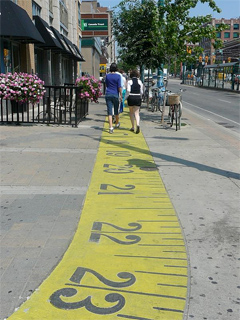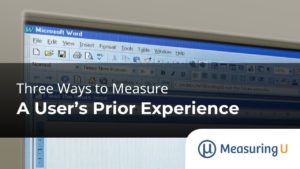 Improving the user experience means starting with the right measure or measures to manage.
Improving the user experience means starting with the right measure or measures to manage.
Here are 10 of the more common ones I’ve written about:
- SUPR-Q: The Standardized Universal Percentile Rank-Questionnaire is a 13 item instrument for measuring website usability, credibility/trust, loyalty and appearance. Scores are based on a database of 200 websites from tens of thousands of users across dozens of industries.
- Net Promoter Score Benchmarks: How likely people are spreading a positive message about your software is a good indicator of future growth. It’s even better to know how your product’s NPS compares with the industry.
- 10 Essential Usability Metrics: Know these metrics, use them and improve them to make a better user experience.
- Completion Rates: The fundamental usability metric. If a user can’t complete the task not much else matters.
- Disasters: The only thing worse than task failure would be when a user fails a task but she thinks she completed it successfully. This is a disaster and across 174 tasks I’ve seen up to 30% of user task-attempts end in a disaster. Don’t let this be your task.
- Task Times: OK, actually the worse thing would be a user taking a long time to think he completed a task he actually failed. Task times are the quintessential efficiency measure (and usually better than clicks). Time is money, and users are money. Waste the former and lose the latter.
- Usability Problems: Low task completion rates, high task times and abundant disasters are usually caused by problems in the user interface. Find them, fix them and prevent them.
- First Clicks: If a user clicks down the wrong path, less than half eventually complete the task successfully. If the first click is down the right path, 87% succeed.
- Usefulness: If it’s not useful then it won’t get used and there will be no user experience to measure. The Technology Acceptance Model (TAM) is a questionnaire for measuring usefulness. Usability itself is actually a good predictor of usefulness in the TAM (when a product is easy to use it suddenly becomes useful: think TiVO).
- System Usability Scale (SUS): The most used questionnaire for measuring the perceived ease of use for software, hardware and mobile devices is the System Usability Scale. This 10 item questionnaire provides a measure of perceived usability that can be a great benchmark, especially when compared to a database of 500 other product tests.


